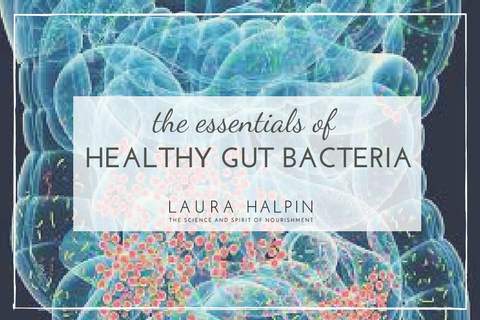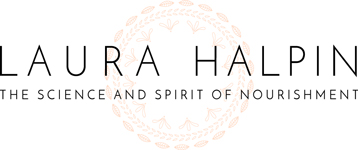
Getting down and dirty: The essentials of healthy gut bacteria
There have been a number of fascinating articles published over the last year in mainstream media: last summer, an article in The Economist entitled “The Human Microbiome: Me, Myself and Us;” or this summer, Michael Pollan’s “Some of My Best Friends are Germs” published in The New York Times. You also may be reading with a combination of fascination and horror the articles about fecal transplants. These articles focus on the centrality of gut health to our overall vitality, and particularly the ecosystem that exists both inside and on our bodies comprised of trillions of bacterial cells, collectively dubbed our “microbiome.”
If one compares the number of our human cells (10 trillion cells) versus the number of bacterial cells that are in and on our bodies (150 trillion cells), one would find, surprisingly, we are less than 10% human. These bacteria are serving us in complex and multiple ways scientists are working hard to understand.
Think of our gut flora as a rich bed of compost, teeming with various critters that provide a rich environment for our garden veggies. In our gut, there are about 100 identified groups of bacteria, or phyla, and each of these families serves various biochemical functions in our bodies. In our bodies, bacteria help us digest complex carbohydrates, help us absorb various nutrients (including Bs which are essential for mental health), help to manufacture neurotransmitters (upwards of 90% of serotonin, the neurotransmitter of calm, confidence and positivity, is manufactured in the gut). Just with that information alone, one can see that there is a significant connection between gut health and mental health. But there’s more. The bacteria in our gut is fundamental in detoxifying our bodies of the myriad toxins that enter our bodies via our food and medications, our skin and the air we breathe.
Perhaps most significant is our gut flora’s role in our immune system. Our bacteria is an integral part of our immune system, helping it to distinguish between enemy and ally. Think of our digestive tract as the inner hole of a bagel. The hole of a bagel is still the outside of the bagel, right? Our digestive tract is much the same – it is the main barrier between what we put into our bodies (the “outside world”) with accompanying microbes and pathogens and our bloodstream (“the inside world”). 75-80% of our immune system is lined up along this tract. This is where the heavy hitting artillery of our immune system lies at the ready. If our gut health is compromised, our main defenses are down. Enemy combatants get through, and our body is left to defend itself with much weaker ammunition. With ANY health issue (including skin conditions, cardiovascular problems, auto-immune conditions, cancer…), tending to one’s gut health needs to be part of the recuperation plan.
The gut flora of a baby is initially set in motion with a vaginal birth, enhanced with breast feeding, and throughout the life of a child, further strengthened and diversified by quality and varied whole foods. In addition, throughout the ages and cross cultures, fermented (or cultured) foods have helped maintain this gut ecosystem. Fermenting foods was initially a means to preserve fresh foods to be eaten when fresh food was no longer in season. Fermentation is essentially rotting food in a safe way. That this fermentation process was actually good for one’s health was an unanticipated bonus. The science of fermentation has caught up with tradition and we understand that fermenting foods produces a breeding ground for beneficial bacteria and yeasts. When consumed regularly, these bacteria add to our own gut bacteria arsenal. Fermented foods, rich not only in bacteria but in enzymes, become even more nutritious than plain ol’ fresh food. Who knew?
When you think of health, and I encourage you to, think of your gut as the epicenter of your health. Gut dysbiosis, or microbial imbalances inside (or on) the body, has become alarmingly prevalent in the past 5o years and the result manifests in increasing rates of allergies, ADHD, chronic skin conditions like eczema and psoriasis, asthma, anxiety and other mood disorders, autism, and auto-immune disorders. What’s going on? What has disturbed our inner environments? The overuse of antibiotics (along with antibiotics in our food supply), the use of birth control pills, the shift in our diets from whole food to processed, increased sugar consumption, increased rates of C-sections, GMOs in our food, and our overall toxic load. And because the gut health of our babies is set in place by our own bacterial blend, with each passing generation, kids are less able to defend the inside world from the outside world.
Our gut flora isn’t the only aspect of gut health we want to tend to, but when the flora is imbalanced or wiped out, the rest of our gut health is left without its protection, thus weakening every other function. In future posts, I’ll cover different aspects of our gut health such as hydrochloric acid levels (got acid reflux, anyone?), leaky gut (allergies? auto-immune disorders?) and irritable bowel syndrome. In the meantime, let’s focus on that rich compost we want to cultivate so that our health gardens bloom.
What are simple ways to protect and diversify our gut flora?
• Eat fermented foods like sauerkraut and fermented veggies. Making fermented veggies is so simple and satisfying. Check out this recipe/video for fermented veggies from one of my favorite food blogs: “How to Make Fermented Vegetables.” Sauerkraut and kimchee and other ferments are now available at quality food stores. Look for refrigerated products. If they’re not refrigerated, there’s a good chance the veggies have been pickled using vinegar, which means that fermentation has not occurred. Other fermented foods include some yogurts, kefir, miso and beet kvass.
• Eat whole food and avoid processed food. Really! In addition to containing additives and chemicals that damage our guts, processed foods do not typically contain the insoluble and soluble fiber that fruits, veggies, nuts, seeds, and grains contain. We need this fiber to nourish our gut flora.
• Eat prebiotics – foods that actually feed the bacteria in our guts. These include: chicory root, Jerusalem artichoke, dandelion greens, garlic, leek, onion, banana, and asparagus.
• Garden! Get some dirt on your skin. The environment we inhabit helps determine our interior environment.
• Get a pet or two. Think germs!
• Be aware of what damages our gut flora garden:
o Antibiotics, including antibiotics used on the animal products we are eating.
o Birth control pills
o Antibacterial soap. With its use, we wipe out the beneficial bacteria that is residing there, thus providing a welcoming breeding ground for bacteria that is not so friendly.
o Sugar, alcohol, caffeine
o Stress
Finally, one can add to the internal compost by taking a high quality, multi-strained probiotic.
As in so many aspects of our health, gut flora is about balance. Just as our external environment is an interconnected ecosystem, so is our internal environment. Since we rely on these ecosystems for our survival, we need to treat both with reverence and respect.



